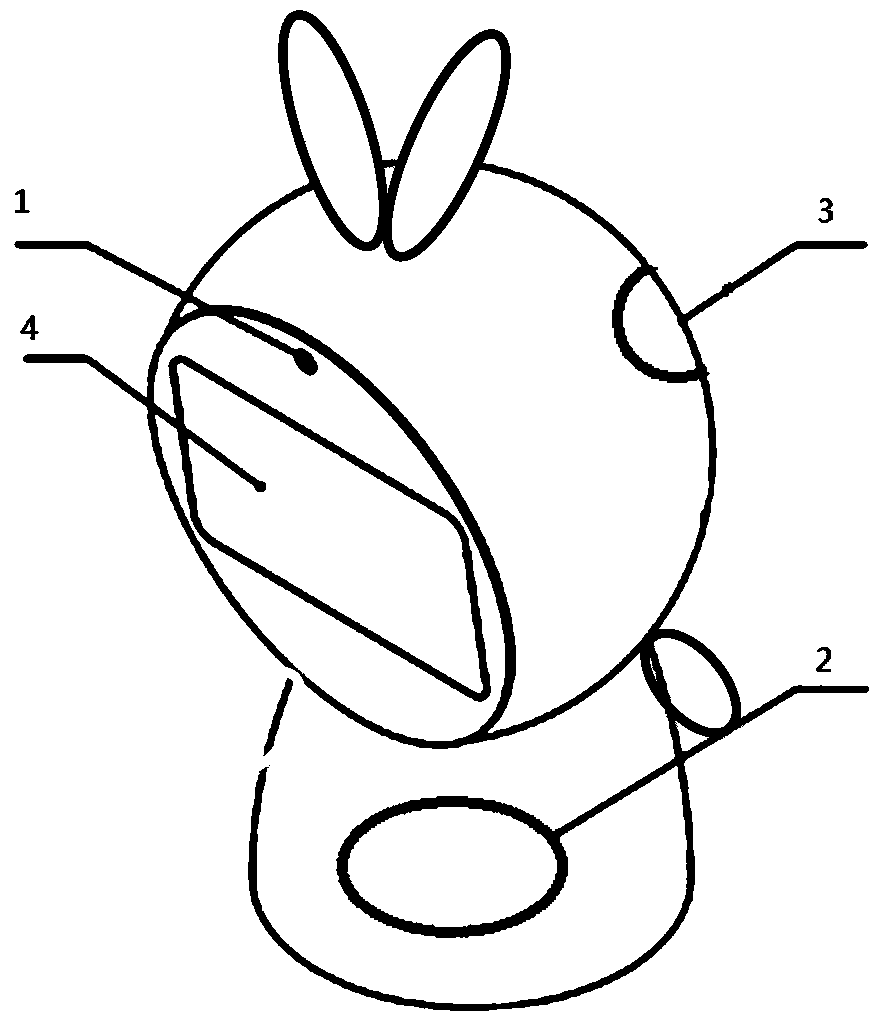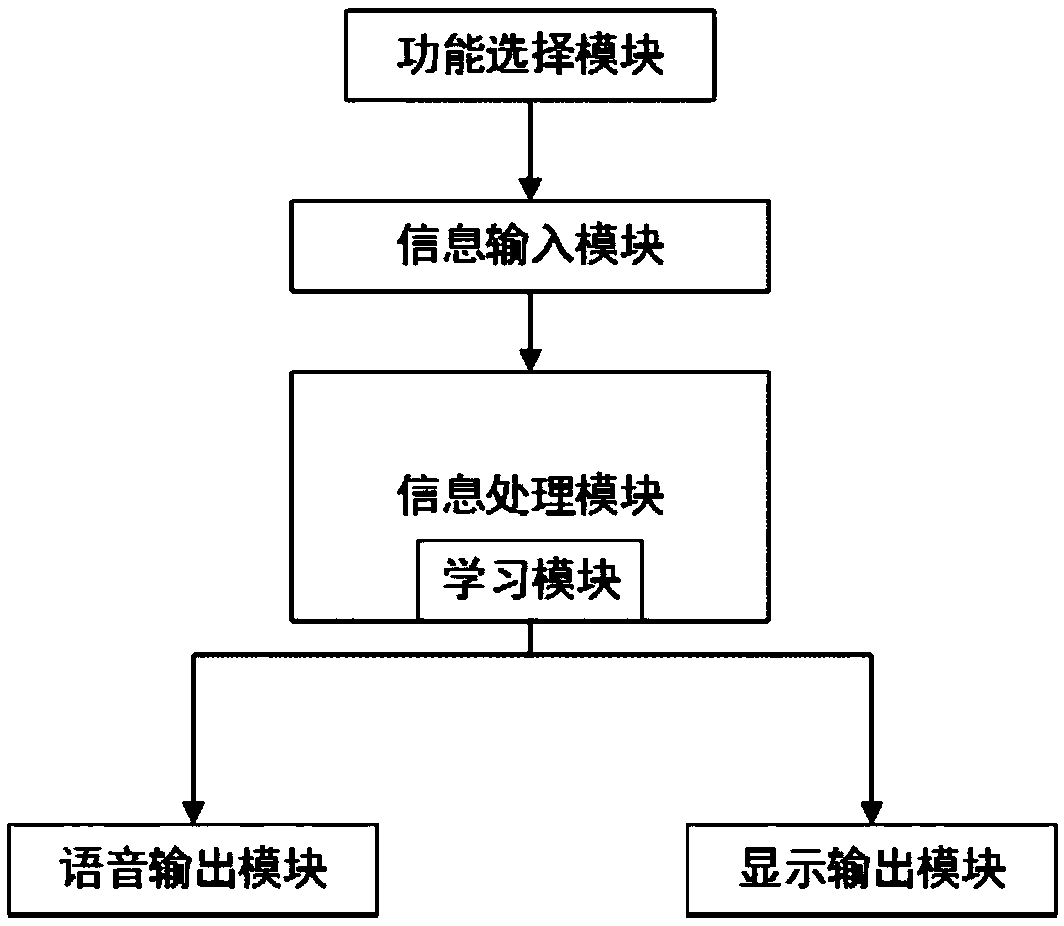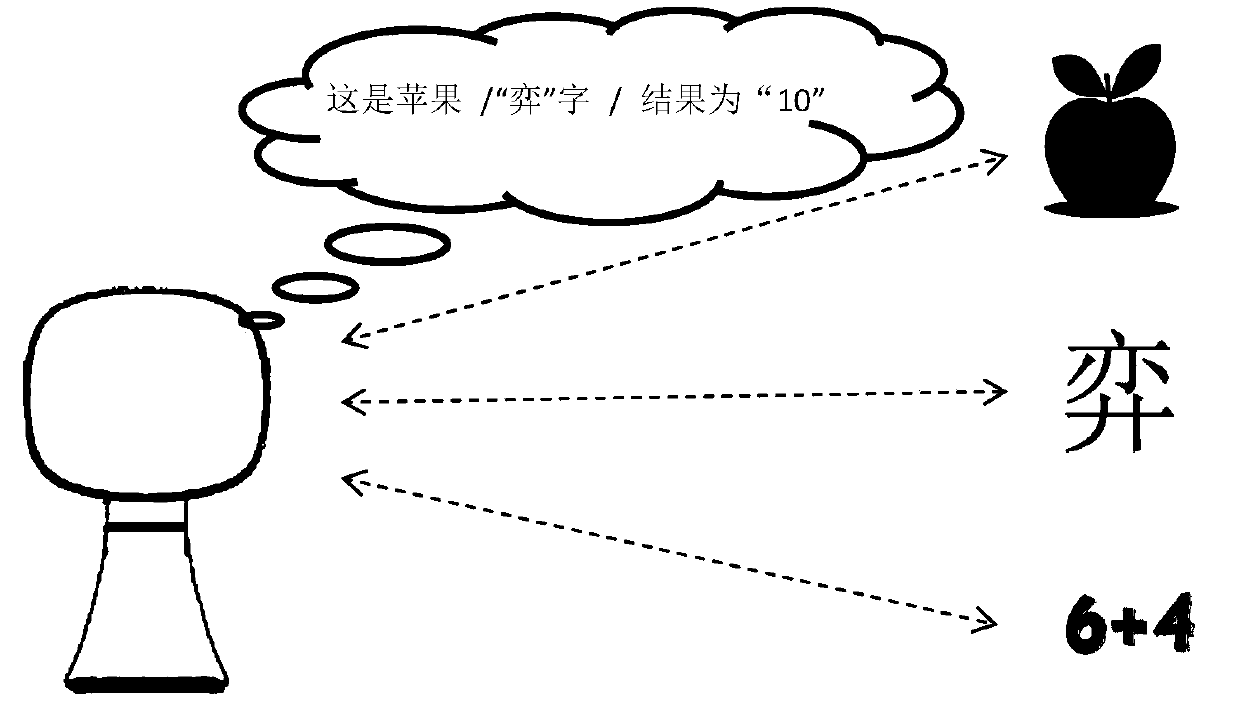Companion learning robot for children and self-learning method for early education system of companion learning robot
A technology for robots and children, applied in the fields of instruments, educational appliances, and electrically operated teaching aids, etc., can solve problems such as inability to learn new knowledge, and achieve the effect of improving recognition.
- Summary
- Abstract
- Description
- Claims
- Application Information
AI Technical Summary
Problems solved by technology
Method used
Image
Examples
Embodiment Construction
[0059] The present invention will be further described below in conjunction with accompanying drawings and examples.
[0060] The children's accompanying learning robot of the present invention has a schematic structural diagram as figure 1 As shown, it includes a camera 1 , an interactive function selection area 2 , a voice receiving and output area 3 and a display screen 4 . Wherein, the camera 1 is located on the top of the companion robot, and is mainly used for the robot to obtain various image information for object recognition from the surrounding environment. The interactive function selection area 2 is located at the front of the learning robot body, and the user can interactively select various functions of the robot by clicking, dragging, sliding, etc. in this area. The voice receiving and output area 3 is located at the back of the head of the learning companion robot, which is mainly used to recognize and accept the user's voice from the surrounding environment, ...
PUM
 Login to View More
Login to View More Abstract
Description
Claims
Application Information
 Login to View More
Login to View More - R&D
- Intellectual Property
- Life Sciences
- Materials
- Tech Scout
- Unparalleled Data Quality
- Higher Quality Content
- 60% Fewer Hallucinations
Browse by: Latest US Patents, China's latest patents, Technical Efficacy Thesaurus, Application Domain, Technology Topic, Popular Technical Reports.
© 2025 PatSnap. All rights reserved.Legal|Privacy policy|Modern Slavery Act Transparency Statement|Sitemap|About US| Contact US: help@patsnap.com



